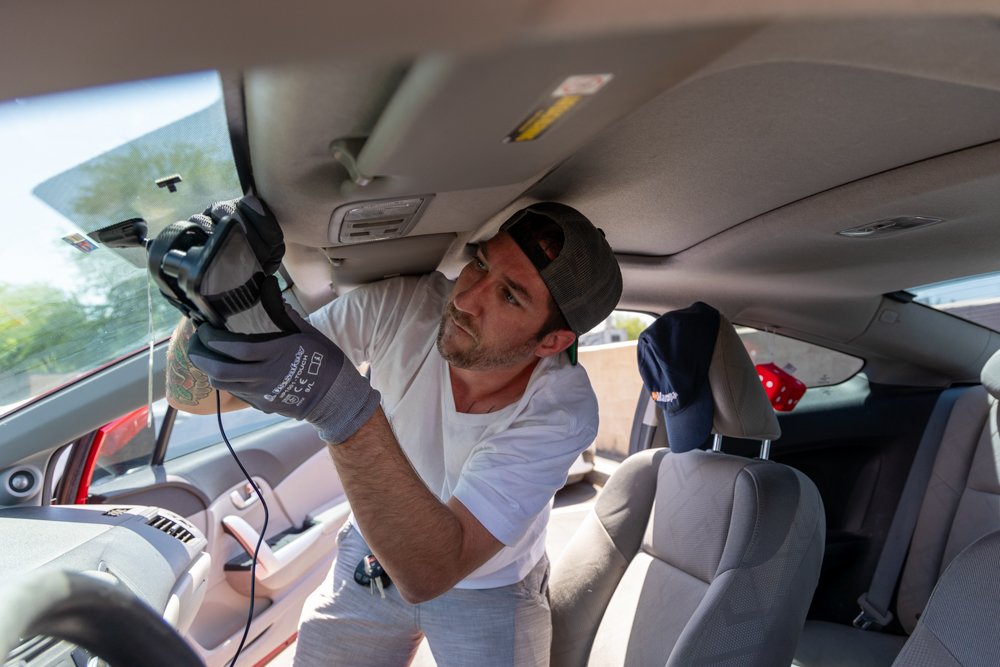Aaron Keel
Vehicular Videography Takes the Internet by Storm: Here’s Why Everyone’s Watching

Aaron Keel of Maricopa Dashcam recently installed a Wolfbox rearview mirror dashcam in a Honda Civic on May 23, 2024, showcasing the growing trend of dashcam usage.
The concept of dashcam footage dates back to the 1927 silent film “A Ride with Chief Kenlon,” which provides viewers with an 11-minute glimpse of a New York Fire Department crew on duty. For two-and-a-half minutes, the film offers a unique driver’s perspective through the bustling streets filled with Ford Model Ts, horse-drawn carriages, trolleys, snowbanks, and pedestrians.
However, today’s dashcam culture vastly differs from those early days. Modern footage, largely popularized on YouTube, includes dramatic car crashes, instances of road rage, driver fails, and high-speed chases. The most-viewed YouTube dashcam video features a storm chaser following a tornado near Laramie, Wyoming, amassing over 65 million views in just four years.
Searches for “dashcam” on YouTube have been on the rise, hitting a peak in 2017. Arizona has emerged as one of the top ten states searching for dashcam videos in the past year. Notable dashcam clips from Arizona include a ghostly figure on State Route 87 and a distracted truck driver crashing on Interstate 8 near Yuma, collectively garnering nearly 5 million views.
Globally, the dashboard camera market was estimated to exceed $4 billion last year, with projections reaching $7.6 billion by 2030. This growth, tracked by Grand View Research in San Francisco, forecasts a 9.6% annual increase, while in the U.S., the growth rate is slightly lower at 7.3% annually.
Insurance claims and legal documentation are primary factors driving this expansion. Jason Hutzler, a Phoenix-based attorney, emphasizes the importance of dashcams for providing indisputable evidence in accidents. He recounts an incident where a client successfully proved he was not at fault in a rear-end collision using dashcam footage.
Former EMT and personal injury law firm employee Aaron Keel echoes this sentiment. He highlights how dashcams can provide crucial evidence for insurance claims and safety. His clients often mention increased road incidents and near-misses as motivators for installing dashcams.
Hutzler notes a significant rise in dashcam usage among his clients, a trend that has grown from rarity to commonplace. Today, roughly one out of five clients have a dashcam, compared to one out of 100 fewer than a decade ago. The Maricopa Traffic Rants group on Facebook is testament to this, frequently featuring dashcam clips of questionable driving behaviors.
Despite their affordability, with prices ranging from $110 to $230, quality dashcams provide vital video evidence. Hutzler and Keel both stress that any dashcam is beneficial, prioritizing installation over concerns about video quality. Keel, dedicated to the community’s safety, believes widespread dashcam use could improve local driving habits.
Keel offers four compelling reasons to install a dashcam: legal evidence in accidents, fraud prevention, theft protection through parking mode, and encouraging better driving habits.


















